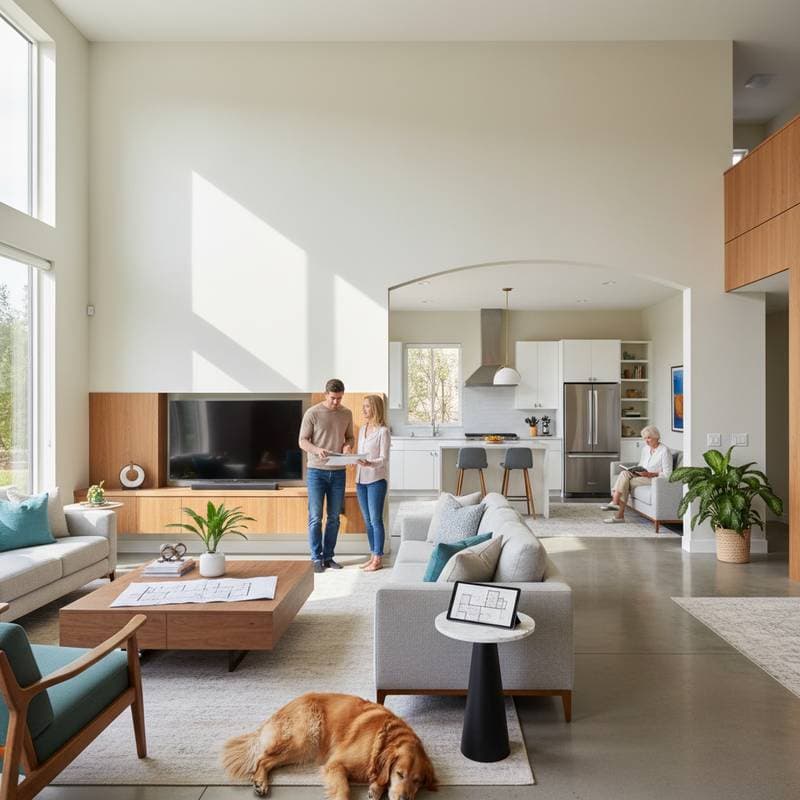2025 SEER2 Standards Drive 15-30 Percent Increase in HVAC Replacement Costs
Homeowners contemplating upgrades to heating and cooling systems encounter new SEER2 efficiency standards alongside elevated installation expenses. These regulations shape equipment selections and total project budgets. A clear understanding of SEER2 definitions, adjustments to system ratings, and budgetary implications equips individuals to sidestep unforeseen expenses and secure enduring investments.
Essential Elements of SEER2 Changes
Several core aspects define the shift to SEER2 standards:
- SEER2 supersedes the prior SEER metric as the benchmark for air conditioner and heat pump efficiency.
- Minimum efficiency thresholds rise, prohibiting the sale of outdated, lower-performing units.
- Updated testing protocols reflect actual operating conditions, including static pressure encountered in typical homes.
- Equipment pricing escalates from redesigned components and rigorous certification demands.
- Supply chain constraints on labor and parts contribute to amplified installation fees.
- Compliance requirements differ by region, influencing eligible models for local installations.
- Potential energy reductions hinge on local climate, residence dimensions, duct integrity, and daily usage patterns.
Evaluating System Choices and Implications
Under SEER2 guidelines, selections among HVAC systems fall into three primary tiers: minimum compliance units, intermediate options, and premium variable-speed models.
| System Type | Typical SEER2 Rating | Advantages | Disadvantages |
|---|---|---|---|
| Minimum Compliance | 13.4 to 14.3 | Minimal initial expense; satisfies regulatory requirements | Elevated energy consumption; limited rebate opportunities |
| Intermediate | 15 to 17 | Equilibrium of performance and operation; reduced noise levels | Incremental expense over basic models |
| Premium Variable-Speed | 18 to 22+ | Superior temperature control; substantial utility reductions; rebate qualifications | Elevated purchase price; intricate setup procedures |
Guidance for Selection:
- Opt for minimum compliance units when preparing for property sale or residing in temperate zones.
- Select intermediate systems for cost-effective performance across diverse climates.
- Pursue premium variable-speed options for prolonged occupancy and minimized ongoing expenses.
Project Sequence and Duration
HVAC replacements proceed through a structured process:
- Initial Assessment: Contractors evaluate residence dimensions, examine ductwork, and determine precise load requirements.
- Equipment Designation: Owners specify unit types and efficiency levels aligned with SEER2 thresholds.
- Quotation and Approvals: Professionals furnish detailed bids and obtain necessary permits.
- Decommissioning: Existing systems disconnect, refrigerants evacuate safely, and components remove.
- Assembly: Fresh units position, refrigerant pathways link, and electrical integrations complete.
- Verification and Activation: Systems charge, airflow validates, and controls configure.
- Final Review: Installers demonstrate functionality and outline maintenance protocols.
Expected Duration: Standard projects span one to three days; extensions occur with duct modifications or electrical upgrades.
Components and Professional Resources
For bid evaluations or installation preparation, standard inclusions encompass:
Core Equipment:
- Outdoor condenser or heat pump assembly
- Indoor evaporator coil or air handler
- Copper refrigerant line set
- Condensate drainage system and auxiliary pump as required
- Programmable or intelligent thermostat
- Stabilizing pad or bracket for exterior placement
Specialized Tools Employed by Experts:
- Vacuum pumps paired with refrigerant gauges
- Detection devices for leaks
- Multimeters for electrical diagnostics
- Instruments for duct pressure analysis
- Manifold kits alongside nitrogen supplies
- Precision tools including crimpers, pipe cutters, and torque wrenches
Familiarity with these elements aids in discerning comprehensive proposals and circumventing incomplete estimates.
Adapting to Local Conditions and Environments
SEER2 thresholds adjust regionally to accommodate climatic variations. Southern locales with extended cooling demands mandate elevated efficiencies for central air conditioners compared to northern areas. Heat pumps adhere to uniform national criteria yet exhibit performance disparities across temperature extremes.
In Hotter Regions: Advanced units recoup investments swiftly amid intensive cooling demands. Implement shading solutions and insulation enhancements to diminish overall load.
In Colder Areas: Hybrid dual-fuel configurations alternate between electric and gas heating for optimal performance.
In Humid Zones: Variable-speed technologies enhance moisture removal and maintain comfort during low-demand periods.
In Arid Territories: Integration of evaporative or combined systems curtails operational expenditures.
Utility incentives frequently align with these adaptations; verify qualification criteria prior to commitment.
Frequently Asked Questions
What occurs with installation of pre-SEER2 units?
Manufacturers cease production and distribution of non-conforming equipment. Installers restrict services to SEER2-compliant models. Deployment of legacy inventory risks code infractions and warranty invalidation.
By what amount does a SEER2 unit exceed the price of an equivalent predecessor?
Homeowners encounter an additional $800 to $2,000 for matching capacity and specifications. Variations arise from manufacturer, locale, and service provider premiums.
Do energy expenses decrease immediately upon upgrade?
Replacement of inefficient or oversized predecessors yields prompt reductions in cooling charges and stabilized temperatures. Benefits amplify with duct sealing and thermostat optimization.
Do incentives exist for SEER2-compliant systems?
Affirmative; utilities and producers provide credits for superior efficiency ratings. Values span $200 to $1,200 based on performance and geography. Request inclusion of application documents in contractor proposals.
Preparing for Your Upgrade
For systems approaching obsolescence, proactive alignment with SEER2 mandates optimizes financial outcomes. Solicit multiple quotations promptly, assess compliant equipment variants, and inquire about incentive programs.
A correctly dimensioned and expertly installed SEER2 system operates with minimal noise, conserves energy, and delivers consistent comfort. Initial investments yield returns via diminished utility payments, extended durability, and elevated living quality.



